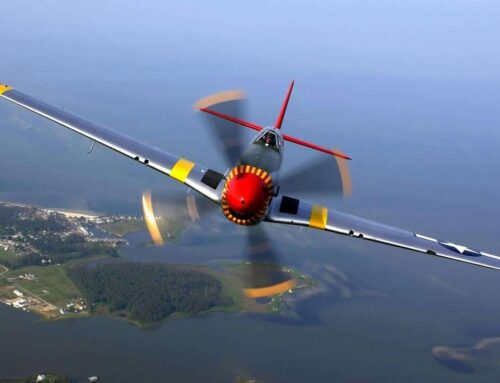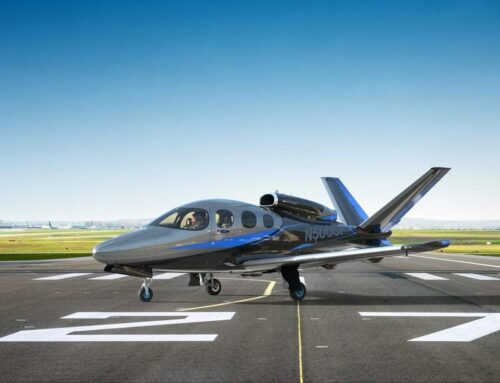The Beechcraft Starship NC-23 is a testament to the visionary design and engineering of its creators. This variant of the Starship series shares the same futuristic aesthetics and advanced technology as the Starship 2000, featuring a forward canard and an absence of a traditional tail. The NC-23 was designed to offer enhanced performance and versatility for business aviation.
Like its sibling, the NC-23 was built with an all-composite airframe, which was revolutionary at the time. This construction method provided significant advantages in terms of weight reduction and structural integrity. The aircraft was equipped with state-of-the-art avionics and propulsion systems, aiming to deliver a superior flying experience.
The Aircraft History
The development of the Beechcraft Starship NC-23 was closely linked to the broader Starship program. Burt Rutan, a renowned aerospace engineer and founder of Scaled Composites, played a crucial role in the design of both the NC-23 and the Starship 2000. Rutan’s innovative approach to aircraft design, which emphasized advanced aerodynamics and the use of composite materials, was instrumental in bringing these unique aircraft to life.
The NC-23 took to the skies for the first time in the late 1980s, showcasing Beechcraft’s commitment to pushing the boundaries of aviation technology. The aircraft was designed to meet the needs of business travelers who required a fast, efficient, and comfortable mode of transportation. Despite its promising start, the NC-23 faced similar challenges to those encountered by the Starship 2000, including high production costs and a challenging certification process.
Only a limited number of NC-23 units were produced, and the aircraft did not achieve widespread commercial success. However, its innovative design and technological advancements left a lasting impact on the aviation industry. Today, the NC-23 is remembered as a bold experiment that paved the way for future innovations in aircraft design.
Specs & Features
The Beechcraft Starship NC-23 is powered by two Pratt & Whitney PT6A-67A turboprop engines, each producing 1,200 horsepower. This powerplant configuration allows the aircraft to achieve a maximum cruise speed of approximately 385 mph (620 km/h) and a range of around 2,500 miles (4,023 km). These performance characteristics made the NC-23 a competitive option for long-range business travel.
One of the key features of the NC-23 is its all-composite airframe. This construction method, which uses advanced materials like carbon fiber, significantly reduces the aircraft’s weight while enhancing its structural integrity and resistance to corrosion. The composite structure also contributes to the aircraft’s sleek, aerodynamic shape, which minimizes drag and maximizes efficiency.
The NC-23’s forward canard design replaces the conventional horizontal stabilizer, improving the aircraft’s stability and control, especially at higher speeds. The absence of a traditional vertical stabilizer is another distinctive feature, with the aircraft relying on twin rudders mounted on the rear of the fuselage for directional control.
Inside, the NC-23 offers a pressurized cabin that can comfortably accommodate up to six passengers. The cabin is designed for comfort and convenience, featuring large windows, plush seating, and advanced climate control systems. The aircraft’s avionics suite includes state-of-the-art navigation and communication systems, enhancing safety and operational efficiency.
Frequently Asked Questions
Who was the chief designer of the Beechcraft Starship NC-23?
Burt Rutan, a renowned aerospace engineer and founder of Scaled Composites, was the chief designer. His innovative approach to aircraft design played a crucial role in the development of the NC-23.
How does the NC-23 differ from the Starship 2000?
While the NC-23 and the Starship 2000 share many design elements, the NC-23 features slight modifications in its avionics and internal systems. These changes were aimed at improving performance and enhancing the flying experience for business travelers.
What are the operational benefits of the NC-23’s design?
The forward canard design and the absence of a traditional vertical stabilizer improve the aircraft’s aerodynamic efficiency and stability. The all-composite airframe reduces weight and enhances structural integrity, while the advanced avionics provide superior navigation and communication capabilities.
Why was the NC-23 production limited?
The high production costs and challenges associated with certifying its innovative design limited the production of the NC-23. Additionally, the market response was not as strong as anticipated, leading to a limited number of units being produced.
Is the NC-23 still in use today?
Only a few NC-23 aircraft are still operational today. Most have been retired and are displayed in museums or private collections.
Conclusion
The Beechcraft Starship NC-23 is a remarkable aircraft that showcases the ingenuity and forward-thinking of its designers. Despite its limited production run, the NC-23 remains an important part of aviation history, demonstrating the potential of innovative design and technology. Its unique features and advanced capabilities continue to captivate aviation enthusiasts and serve as a testament to the visionary work of Burt Rutan and his team.




